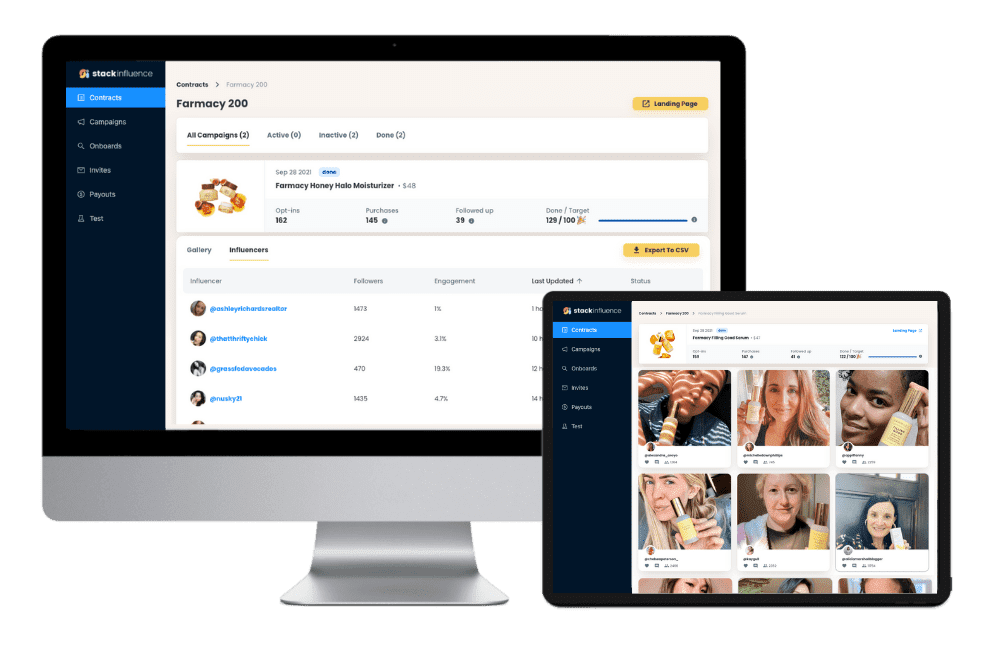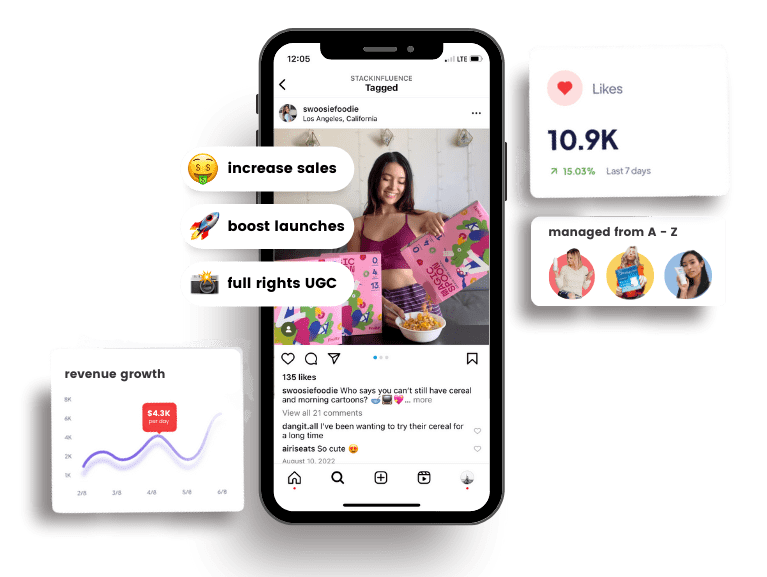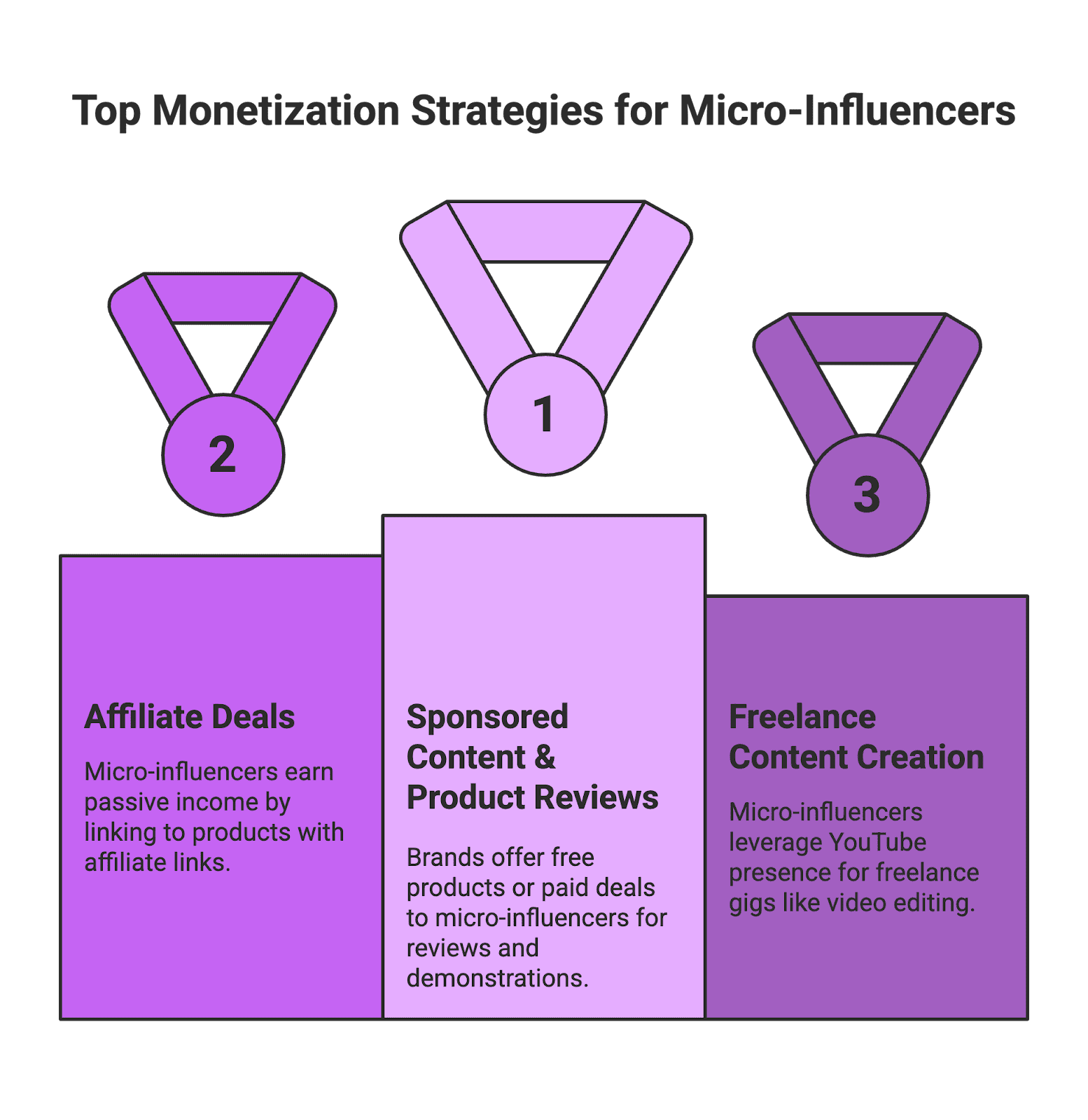How Much Money Do YouTubers Make?
11th
August, 2025
Influencer Marketing
Amazon Marketplace
Artificial Intelligence
TikTok Tips
Every aspiring content creator on YouTube has wondered, “How much money do YouTubers actually make?” Particularly when a channel grows to 1 million subscribers, it’s tempting to imagine a life of luxury funded by vlogging. In reality, YouTube income depends on many factors – not just subscriber count. In this comprehensive 2025 guide, we’ll break down how YouTube monetization works, what a creator with one million subscribers can roughly earn, and why even micro-influencers (with far fewer subscribers) can still turn a profit. We’ll also explore key terms like CPM, sponsorships, e-commerce partnerships, and UGC (user-generated content) so you get the full picture of the YouTube money-making landscape.
How Do YouTubers Make Money? (Monetization Basics)
Estimated YouTube Earnings (Monthly Ad Revenue)
|
Subscriber Count |
Monthly Views |
Low CPM ($2) |
High CPM ($5) |
|
100,000 |
300,000 |
$600 |
$1,500 |
|
1,000,000 |
3,000,000 |
$6,000 |
$15,000 |
|
10,000,000 |
30,000,000 |
$60,000 |
$150,000 |
Before diving into numbers, it’s important to understand how YouTubers earn revenue. Successful content creators diversify their income through multiple streams, including:
-
Ad Revenue (YouTube Partner Program)
The most common income source is advertising. Once eligible for monetization (currently requires at least 1,000 subscribers and other criteria), creators earn a share of the ad revenue from their videos. YouTube typically takes a 45% cut of ad earnings, leaving 55% to the creator. The rate you earn per view (known as CPM, cost per thousand views) can range from as low as $1–$2 to upwards of $10+, depending on your niche and audience.
-
Brand Sponsorships & Product Placements
Companies pay YouTubers to mention or promote products in videos. These deals can be extremely lucrative – sometimes bringing in more than ad revenue – especially for channels with dedicated, engaged audiences. For example, a tech gadget company or an Amazon seller might pay a tech YouTuber to review a new device, or a skincare brand might sponsor a beauty vlogger’s content.
-
Merchandise and E-Commerce
Established creators often launch their own merchandise (t-shirts, courses, apps, etc.) or even full-fledged e-commerce businesses. With a loyal subscriber base, selling products directly can significantly boost a YouTuber’s income. It’s not unheard of for creators to turn their personal brand into product lines on Shopify or Amazon.
-
Fan Funding (Memberships & Donations)
Platforms like Patreon, YouTube Channel Memberships, or live-streaming features (Super Chat, etc.) allow fans to directly support their favorite creators. While these might not apply to every channel, they can be a steady source of monthly income, especially for creators who have a strong community or offer exclusive content.
These avenues mean that subscriber count alone doesn’t tell the whole story of a YouTuber’s earnings – but it does correlate with potential view counts, which drive ad revenue and attract sponsorships. Now, let’s get specific about that magic number: one million subscribers.

Unlock the Power of Micro Influencers and Elevate your Brand Today!

How Much Does YouTube Pay for 1 Million Subscribers?
The phrase “pay for 1 million subscribers” is a bit misleading – YouTube doesn’t cut a check just because you hit a subscriber milestone. Instead, income comes from the views and engagement those subscribers generate. So, the real question is: with one million subscribers, how many views do you get and how much money can that translate into?
Let’s break it down with a hypothetical scenario for a channel with 1,000,000 subs:
- Not every subscriber watches every video, but let’s assume a solid portion do. Say each subscriber on average watches 3 videos per month on your channel. That would be about 3 million views per month.
- Now, the CPM (ad rate per 1,000 views) can vary. Let’s consider a moderate CPM of $3–$5 (mid-range across YouTube). At $3 per 1,000 views, 3 million views would net you around $9,000 in a month from ads. At a higher CPM of $5, those same views could bring in $15,000 per month.
- Annually, this rough estimate would put a 1M-subscriber channel in the ballpark of $100,000+ from ad revenue alone, if those view and CPM assumptions hold. In reality, the range could be quite wide – some channels with a million subscribers might only earn $30k/year from ads (if their audience or content type yields lower views or lower CPMs), while others might earn $200k/year or more (if they consistently get high views or have expensive ads running).
The key takeaway: 1 million subscribers might roughly translate to five figures of ad revenue per month, but there’s a big depends attached to that number. To visualize this, the chart below compares estimated monthly ad earnings for channels at three different subscriber levels under two ad rate scenarios (a low $2 CPM vs. a higher $5 CPM):
Not All Views Are Equal: Niche & CPM Rates Matter
An important factor in YouTube earnings is the type of content you make – in other words, your niche. Advertisers pay different rates depending on the audience they’re trying to reach. For example, an entertainment vlog may get lots of views but advertisers might only pay a few dollars per thousand views, whereas a finance or enterprise tech channel could command much higher ad rates because the viewers are more valuable to advertisers (they might be prospective buyers of high-value products or financial services).
Other factors also influence ad earnings:
- Viewer Location: Advertisers target specific countries and regions. Generally, views from the United States, Canada, Western Europe, etc. earn higher ad revenue than views from developing regions (due to higher advertising spend). A million views from the US will pay substantially more than a million views from a lower-CPC country.
- Seasonality: Advertisers tend to spend more in Q4 (holidays) and less in January. So a video getting 1 million views in December might earn almost double what the same video would in January, simply because of ad budgets and CPM fluctuations throughout the year.
- Video Length & Frequency of Ads: YouTube allows mid-roll ads on videos over 8 minutes. A creator who strategically places multiple ads in a 20-minute video can earn more from the same number of views than a creator who posts 3-minute clips with only one ad. Upload frequency also matters – a channel posting twice a week might accumulate more total views (and money) than one posting monthly, even with the same subscriber count.
- Engagement & Watch Time: The more your viewers watch (and don’t skip) ads, the more revenue. Two channels with 1M subs might both get a million views on a video, but if one channel’s audience watches longer (meaning more ads have a chance to play) or is more likely to disable adblock/YouTube Premium, that channel will earn more from those views.
Earning Money on YouTube as a Micro-Influencer

You might be thinking, “Well, I don’t have anywhere near a million subscribers – can I still make money on YouTube?” Absolutely. In fact, many micro-influencers (let’s say channels in the 10k–100k subscriber range) are monetizing their content quite successfully, though their strategies might differ a bit from the biggest YouTubers.
For smaller channels, ad revenue is modest (for example, a 50,000-subscriber channel might get on the order of 50k–150k views a month, which at maybe $3–$5 CPM only brings a few hundred dollars). The real advantage micro-influencers often have is a tight-knit, engaged community and a specific niche. This makes them attractive to brands for sponsorships and collaborations. A company would sometimes rather work with 20 micro-influencers who each have 50k highly engaged followers than one mega influencer with a million passive followers.
Micro-influencers can monetize by:
-
Sponsored Content & Product Reviews
Even with a few thousand subs, you can start getting free products or paid deals from brands in your niche. For instance, an outdoor gear company might send a camping YouTuber (say 20k subs) some free equipment to review, or a small beauty startup might pay a micro-influencer to demonstrate a new skincare line. These partnerships often come through networking or specialized platforms.
-
Affiliate Deals
Smaller creators can leverage affiliate marketing just like big channels. If you have a focused niche (e.g., photography tutorials), linking to your gear on Amazon with affiliate links can generate a trickle of passive income that adds up.
-
Freelance Content Creation
Some micro-influencers leverage their YouTube presence to get freelance gigs – for example, video editing, photography, or social media consulting. Your YouTube channel acts as a portfolio showcasing your skills and personality.
In the context of brand partnerships, user-generated content and authenticity are key. Brands (including many e-commerce companies and Amazon sellers) are eager to get real people talking about their products. This is where micro-influencers shine – they produce relatable, trustworthy UGC that audiences love. Platforms like Stack Influence, for example, connect micro-influencers with e-commerce brands for campaigns, making it easier for up-and-coming creators to land sponsorships even with a smaller follower count. In many cases, a micro-influencer can earn more from a single well-negotiated brand deal or free product haul than from months of YouTube ad revenue.

Unlock the Power of Micro Influencers and Elevate your Brand Today!

Frequently Asked Questions
How much does YouTube pay for 1 million views?
There’s no fixed pay rate for a million views on YouTube – it varies. On average, a YouTube video reaching 1,000,000 views can earn roughly $2,000 to $5,000 USD from AdSense. This assumes a typical range of $2–$5 CPM (cost per 1,000 views). However, the actual payout could be lower or higher. For example, if those million views are on a personal finance video (high CPM niche) watched mostly by viewers in the US with ads enabled, the earnings could exceed $5,000. On the other hand, a million views on a comedy vlog with a younger international audience (lower ad rates or more ad-block usage) might fetch well below $2,000. The range is huge because it all comes down to ad rates and viewer specifics.
Does YouTube pay you for subscribers?
No, YouTube does not pay per subscriber. YouTube pays creators for ad views (and some other engagement metrics like YouTube Premium watch time), not for subscriber count. Subscribers are valuable because they tend to correlate with more views and a loyal audience base – which in turn leads to more opportunities to earn money through ads and other means. Think of subscribers as potential recurring viewers. Hitting milestones like 100k or 1M subscribers can attract sponsor interest and prestige, but YouTube itself only pays you when those subscribers (and other viewers) actually watch your videos (and the ads on them). There is one indirect way subscribers matter: you need at least 1,000 subscribers (along with 4,000 hours of watch time in the past year, or other criteria for Shorts) to join the YouTube Partner Program and start earning ad revenue at all.
How many subscribers do you need to start making money on YouTube?
To officially start earning money through YouTube’s built-in monetization, you need to join the YouTube Partner Program (YPP). As of 2025, the requirements to join YPP are:
- 1,000 subscribers on your channel, and
- 4,000 hours of valid public watch time in the last 12 months (for long-form videos), or alternatively, 10 million valid public Shorts views in the last 90 days (for Shorts-focused creators).
- You also need to follow YouTube’s community guidelines and have an AdSense account set up.
Once you meet these thresholds and get approved, you can start earning from ads. However, you don’t need to wait for 1,000 subs to monetize in other ways. Even with a smaller channel, you can make money through methods like sponsorships, affiliate links, or merchandise sales outside of YouTube. Many creators start these income streams well before hitting the official YPP requirements.
Conclusion
Having 1 million subscribers is a huge accomplishment and can certainly unlock a substantial income on YouTube – often in the six-figures annually if the audience is leveraged well. But as we’ve seen, the money a YouTuber makes is not a simple flat rate per subscriber. Factors like content niche, viewer demographics, engagement, and diversification of income streams (from UGC sponsorships to e-commerce ventures) all play significant roles in determining earnings.
For aspiring YouTubers and content creators, the key lessons are: focus on building an engaged community, understand who your viewers are, and explore multiple monetization paths (ads, brand deals, products, etc.). Micro-influencers should take heart that you don’t need a million subs to start earning – even a lean, passionate audience can be monetized with the right approach, authenticity, and partnerships.
In the ever-growing creator economy, there’s room for channels of all sizes to thrive. Whether you’re reviewing gadgets, vlogging your daily life, or teaching DIY crafts, you can find ways to make your passion profitable. Success on YouTube isn’t overnight or guaranteed, but with consistency and creativity, you can grow both your subscriber count and your bank account.

By William Gasner
CMO at Stack Influence
William Gasner is the CMO of Stack Influence, he's a 6X founder, a 7-Figure eCommerce seller, and has been featured in leading publications like Forbes, Business Insider, and Wired for his thoughts on the influencer marketing and eCommerce industries.
Want new articles before they get published? Subscribe to our Awesome Newsletter.
stack up your influence
turning creativity into currency
our headquarters
111 NE 1st St, Miami, FL 33132
our contact info
[email protected]
stack up your influence
turning creativity into currency
our headquarters
111 NE 1st St, 8th Floor
Miami, FL 33132


